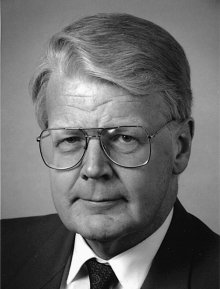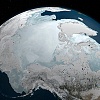The Future of Arctic Governance: the Arctic Circle or the Arctic Council?
In
Log in if you are already registered
Canada took over the rotating chairmanship of the Arctic Council in 2013 for the first time since its inauguration in 1998. The Council, however, could hardly be described as the same forum that it was in the ’90s. The organisation has begun to focus more on security for transportation routes and resource exploration since its 2011 ministerial meeting in Nuuk, and the Kiruna meeting in 2013 bestowed observer status on five Asian countries, including energy-hungry China and India. Observers were initially concerned that Canadian leadership would mean less transparency and movement away from non-Arctic, international participation in the forum. Although the prior may have been well founded, the latter was put to rest with the Kiruna ministerial, which marked the transfer of chairmanship from Sweden to Canada.
Despite increased internationalisation, the Arctic Council may not retain its status as the premier forum on regional concerns — including the lucrative hydrocarbon reserves lying beneath the icy waters. In April 2013, the Icelandic Prime Minister Ólafur Ragnar Grímsson founded a new forum, Arctic Circle; its first assembly was held in October of that same year. Arctic Circle is less institutionalised and more inclusive than the Arctic Council, which has allowed it to include such diverse speakers as Google’s Eric Schmidt and a representative of Bhutan’s Department of Geology and Mines. Scheduled to take place annually, the Arctic Circle assemblies could be set to steal the spotlight from its sister organization, the Arctic Council.
President of Iceland (1996 – ) Source: Alþingi http://www.althingi.is/altext/cv/is/?nfaerslunr=440
True, neither forum receives much media attention beyond the odd editorial on increased interest in oil exploration in the Arctic Ocean, but that will change. Given deepening concerns about climate change and secure energy supplies, the region is bound to attract more interested parties as time goes on. But will the Circle or the Council become the regional gatekeeper? The inclusive, Icelandic-led brainchild of Grímsson or the older, more strictly organized Council?
The Arctic Circle’s most recent meeting in 2014, straddling the end of October and the beginning of November, managed to draw together larger and more diverse delegations than ever before. While the only head of state to deliver a speech at the 2013 Arctic Circle was the Icelandic president himself, the 2014 edition included speeches from the Finnish President Sauli Niinistö and a prerecorded speech from German Chancellor Angela Merkel in addition to Grímsson’s opening and closing addresses. Other notable additions to the forum’s agenda were an opening speech from OECD Secretary-General José Ángel Gurría and a discussion on indigenous involvement led by Inuit leader Terry Audla and Inuit Circumpolar Council Chair Okalik Eegeesiak.
In keeping with the precedent set by previous years, the Circle touched on subject often neglected or intentionally avoided by the Arctic Council. In 2014 the Arctic Circle organised plenary sessions on Arctic security, the future of disputed transport routes, connections between the Himalayan and Arctic regions and perspectives on the Arctic from South Korea, Singapore and the United Kingdom. Unlike the Arctic Council, where a more developed institutional structure assigns roles of varying importance, the Arctic Circle is a loose forum for people that live, work or are just interested in the Arctic, which allows it to adapt quickly to regional demands and acts a conduit for future cooperation.
It remains to be seen if the Circle will live up to its promise and garner more attention over the course of its planned annual assemblies. Although Grímsson claims to be optimistic about the opportunities the Circle could produce for young Icelanders facing tough economic conditions, the forum may not survive his — granted, extraordinarily long — term as president. If, however, it manages to continue attracting high-profile speakers from both the private and public sectors the world over, its fresh image could easily crush the limited and staid media presence of the Arctic Council just as the region rushes headlong onto the world stage.





